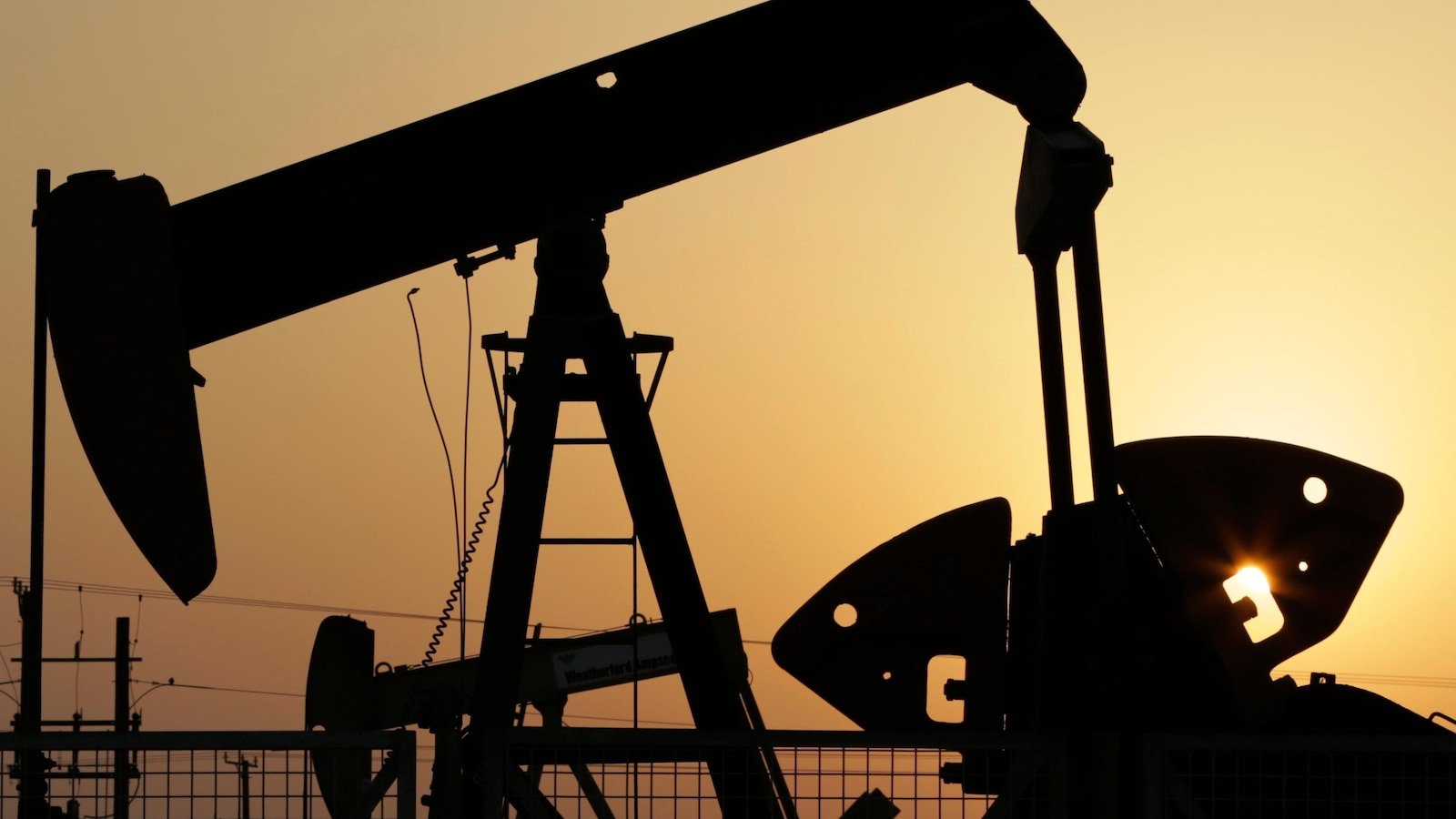Hong Kong – Petroleum prices fell more than $ 2 per barrel at dawn on Monday after the OPEC+ Petroleum -Producing Nations Group said it plans to increase production. US futures
The American crude oil oil sank $ 2.21 or 3.8% at $ 56.08 per barrel in electronic commerce in the New York commercial exchange.
Brent Crude, The International Standard, lost $ 2.14 to $ 59.15 per barrel.
During the weekend, the OPEC+ eight -nations group announced that it will increase its production by 411,000 barrels per day to June 1, increasing production increases.
The group said that the strong foundations were behind the decision, although analysts also speculated that it could reflect a desire for Curry with the president of the United States, Donald Trump, before making a visit to the Middle East at the end of this month.
Prices have fallen almost 20% in the last three months, since merchants have taken into account the probable impact of the commercial policies of US President Donald Trump in the global economy.
“Washington wants cheap energy, and Gulf producers still rely on the security guarantees of the United States; the White House attacks, they listen,” said Stephen Innes of Spi Asset Management in a comment.
“In that sense, the president of the United States has become an unofficial swing vote within the OPEC+,” he said.
The ee. Uu crude oil fell approximately 17% during the year and prices are falling to some extent, however, where many producers can no longer obtain profits.
In the trade trade, the markets were closed in Shanghai, Hong Kong, Tokyo, Seoul and India. AustraliaANDP/ASX 200 lost 0.7% to 8,182.90, while Taiwan Taiex decreased 2.1%.
The US dollar fell to 144.32 Japanese and 144.71 yen.
The euro rose to $ 1,1334 from 1,1306.
On Friday, Wall Street extended its profits to a ninth consecutive day, the longest winning streak on the market since 2004. It has recovered much of the land that it lost after President Donald Trump increased his commercial war in early April.
The rally was stimulated by a better than expected Report on the United States labor market And revived the hopes that Washington will watch its commercial tensions with China.
The sANDP 500 rose 1.5% to 5,686.67. The Dow Jones industrial average added 1.4% to 41,317.43, and the Nasdaq compound increased 1.5% to 17,977.73.
The reference index has still dropped 3.3% so far this year, and 7.4% below the record that reached in February.
The profits were wide. Approximately 90% of the shares and each sector in the SANDP 500 Advanced. Technological actions led the way. Microsoft rose 2.3% and Nvidia increased 2.5%. Apple, however, fell 3.7% after the iPhone manufacturer estimated that Trump rates will cost $ 900 million.
Banks and other financial companies also obtained solid profits. JPMorgan Chase increased 2.3% and the visa closed 1.5% more.
Employers added 177,000 jobs in April. That marks a slowdown in the hiring of March, but it was solidly better than economists expected. However, the latest work figures still do not reflect the effects on the economy of Trump’s rates on the board. Many of the most severe tariffs that were supposed to be in force in April were delayed for three months, except those against China.
The labor market is closely monitored by the signs of stress in the midst of commercial war tensions. Solid employment has helped feed the solid consumer spending and economic growth in recent years. Economists are now concerned about the impact that import taxes will have on consumers and companies, especially how the highest costs will harm hiring and spending.
The economy is already showing signs of tension. The US economy shrunk at an annual rate of 0.3% during the first quarter of the year. It was slowed by an increase in imports while companies tried to get ahead of Trump’s rates.
Companies have been reducing and withdrawing financial forecasts due to uncertainty about the amount of rates that will cost them and how much they will squeeze consumers and SAP spending.





